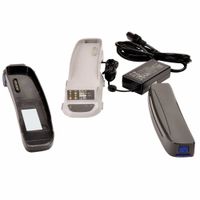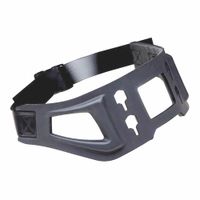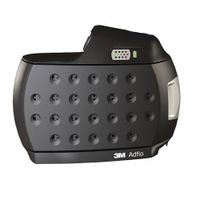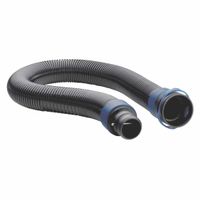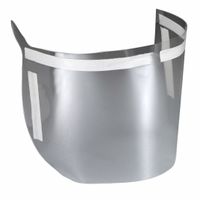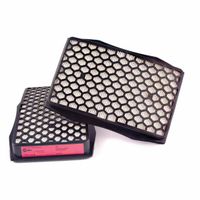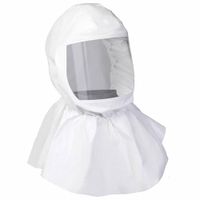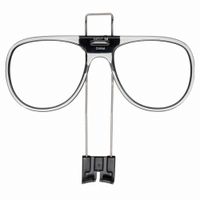Call +(254) 703 030 000 / 751 483 999 / 721 704 777
- Home
- Safety
- Respiratory Protection
- Papr Powered Air Purifying Respirator Systems Components
- Papr System Components
.....Read More
Frequently Asked Questions
What are the main components of a PAPR system?
The main components of a Powered Air-Purifying Respirator (PAPR) system include:
1. **Facepiece or Hood**: This is the part that covers the user's face or head, providing a barrier against contaminants. It can be a full-face mask, half-mask, or a hood, depending on the level of protection required and user preference.
2. **Blower Unit**: The blower is a battery-powered device that draws in ambient air and pushes it through the filter. It ensures a continuous flow of purified air to the user, maintaining positive pressure inside the facepiece or hood to prevent contaminants from entering.
3. **Filters or Cartridges**: These components remove particulates, gases, or vapors from the air. The type of filter or cartridge used depends on the specific contaminants present in the environment. They are replaceable and must be selected based on the hazard.
4. **Breathing Tube**: This flexible tube connects the blower unit to the facepiece or hood, delivering the filtered air to the user. It must be securely attached to prevent leaks.
5. **Battery Pack**: The battery powers the blower unit. It can be rechargeable or replaceable, and its capacity determines the duration of use. Proper maintenance and charging are essential for reliable operation.
6. **Harness or Belt**: This component supports the blower unit and battery pack, allowing the user to wear the system comfortably. It distributes the weight evenly and keeps the components securely in place during use.
7. **Control System**: Some PAPR systems include controls for adjusting airflow, monitoring battery life, and providing alerts for filter replacement or battery status.
These components work together to provide respiratory protection by delivering clean, breathable air to the user in environments with hazardous airborne contaminants.
How often should PAPR filters be replaced?
PAPR (Powered Air-Purifying Respirator) filters should be replaced based on several factors, including the manufacturer's recommendations, the specific environment in which they are used, and the type of contaminants present. Generally, PAPR filters should be replaced when:
1. **End-of-Service-Life Indicator (ESLI):** If the filter has an ESLI, replace it when the indicator signals that the filter is no longer effective.
2. **Breathing Resistance:** If you notice increased breathing resistance, it may indicate that the filter is clogged and needs replacement.
3. **Contaminant Breakthrough:** If you detect any odor, taste, or irritation, it suggests that the filter is no longer providing adequate protection and should be replaced immediately.
4. **Manufacturer's Guidelines:** Always follow the manufacturer's instructions regarding the lifespan and replacement schedule of the filters. This can vary depending on the type of filter and the conditions of use.
5. **Usage Conditions:** In environments with high concentrations of contaminants, filters may need to be replaced more frequently. Conversely, in less contaminated environments, the filters may last longer.
6. **Physical Damage:** Replace the filter if it becomes damaged, wet, or visibly dirty, as this can compromise its effectiveness.
7. **Regular Maintenance Schedule:** Establish a regular maintenance schedule based on the above factors and the specific requirements of your workplace or task.
By adhering to these guidelines, you can ensure that your PAPR provides optimal protection against airborne hazards.
How do you properly clean and maintain a PAPR system?
1. **Disassemble the PAPR**: Remove the battery, filter, breathing tube, and headpiece. Follow the manufacturer's instructions for disassembly.
2. **Inspect Components**: Check for any damage or wear on the battery, filter, breathing tube, and headpiece. Replace any damaged parts.
3. **Clean the Headpiece**: Use a mild detergent and warm water to clean the headpiece. Rinse thoroughly and allow it to air dry. Avoid using harsh chemicals that could damage the material.
4. **Clean the Breathing Tube**: Wash the breathing tube with mild detergent and warm water. Rinse well and hang to dry. Ensure it is completely dry before reassembly.
5. **Clean the Blower Unit**: Wipe the exterior of the blower unit with a damp cloth. Avoid submerging it in water. Use a soft brush to remove any debris from the intake area.
6. **Clean the Battery**: Wipe the battery with a damp cloth. Ensure the contacts are clean and dry. Do not immerse the battery in water.
7. **Filter Maintenance**: Do not wash or reuse filters unless specified by the manufacturer. Replace filters according to the manufacturer's guidelines or when they become clogged or damaged.
8. **Reassemble the PAPR**: Once all components are dry, reassemble the PAPR system following the manufacturer's instructions.
9. **Storage**: Store the PAPR in a clean, dry area away from direct sunlight and extreme temperatures. Ensure it is stored in a way that prevents damage to any components.
10. **Regular Checks**: Perform regular checks and maintenance as per the manufacturer's recommendations to ensure the PAPR system remains in good working condition.
11. **Documentation**: Keep a maintenance log to track cleaning, inspections, and part replacements.
12. **Training**: Ensure all users are trained in proper cleaning and maintenance procedures.
What are the signs that a PAPR system needs servicing?
Signs that a PAPR (Powered Air-Purifying Respirator) system needs servicing include:
1. **Reduced Airflow**: If the airflow feels weaker than usual, it may indicate a clogged filter or a failing motor.
2. **Unusual Noises**: Grinding, rattling, or other unusual sounds from the blower unit suggest mechanical issues.
3. **Battery Issues**: Shortened battery life or failure to hold a charge indicates the need for battery replacement or servicing.
4. **Visible Damage**: Cracks, tears, or other visible damage to the hood, facepiece, or breathing tube can compromise protection.
5. **Odor Detection**: If you can smell contaminants while wearing the PAPR, it may indicate filter saturation or leaks.
6. **Increased Breathing Resistance**: Difficulty in breathing or increased resistance can signal clogged filters or airflow obstructions.
7. **Warning Indicators**: Many PAPRs have built-in alarms or indicators for low battery, low airflow, or filter replacement needs.
8. **Filter Change Frequency**: If filters need changing more frequently than usual, it may indicate a problem with the system.
9. **Inconsistent Performance**: Fluctuations in performance or intermittent operation suggest electrical or mechanical issues.
10. **Past Service Intervals**: If the PAPR has not been serviced according to the manufacturer's recommended schedule, it may require maintenance.
11. **User Discomfort**: Any discomfort or irritation experienced by the user can indicate improper fit or malfunctioning components.
12. **Regulatory Compliance**: Failure to meet safety standards or regulatory compliance during inspections necessitates servicing.
Regular maintenance and prompt servicing based on these signs ensure the PAPR system functions effectively and safely.
How do you test the airflow of a PAPR system?
To test the airflow of a Powered Air-Purifying Respirator (PAPR) system, follow these steps:
1. **Preparation**: Ensure the PAPR is fully assembled with a charged battery and a clean, appropriate filter. Check the manufacturer's instructions for specific requirements.
2. **Flow Meter Setup**: Obtain a calibrated airflow meter designed for PAPR testing. Attach the flow meter to the PAPR's breathing tube or hood, depending on the design. Ensure a secure and airtight connection.
3. **Power On**: Turn on the PAPR unit. Allow it to run for a few minutes to stabilize the airflow.
4. **Measure Airflow**: Observe the reading on the flow meter. The airflow should meet or exceed the minimum flow rate specified by the manufacturer, typically measured in liters per minute (L/min). Common minimum flow rates are around 170-225 L/min, but this can vary.
5. **Check for Consistency**: Ensure the airflow remains consistent and does not fluctuate significantly during the test. Inconsistent airflow may indicate a problem with the motor, battery, or filter.
6. **Inspect Components**: If the airflow is below specifications, inspect the battery charge, filter condition, and any obstructions in the airflow path. Replace or recharge components as necessary and retest.
7. **Record Results**: Document the airflow test results, including date, time, and any corrective actions taken. This helps maintain a record for compliance and maintenance purposes.
8. **Regular Testing**: Conduct airflow tests regularly as part of routine maintenance, especially before use in critical environments.
By following these steps, you ensure the PAPR system provides adequate protection by delivering the required airflow to the user.
What types of filters are compatible with different PAPR systems?
Filters compatible with different PAPR (Peak-to-Average Power Ratio) systems vary based on the specific requirements and design of the communication system. Here are some common types:
1. **Digital Filters**: These are used in digital PAPR reduction techniques. They include:
- **FIR (Finite Impulse Response) Filters**: Used for their linear phase response, which is crucial in maintaining signal integrity.
- **IIR (Infinite Impulse Response) Filters**: Preferred for their efficiency in terms of computational resources.
2. **Analog Filters**: Utilized in analog PAPR systems, including:
- **Low-Pass Filters**: To remove high-frequency noise and harmonics generated during PAPR reduction.
- **Band-Pass Filters**: To isolate the desired frequency band and suppress out-of-band emissions.
3. **Adaptive Filters**: These filters adjust their parameters dynamically to optimize PAPR reduction in real-time, suitable for systems with varying signal conditions.
4. **Wavelet Filters**: Employed in wavelet-based PAPR reduction techniques, these filters decompose signals into different frequency components, allowing for efficient PAPR management.
5. **Chebyshev and Butterworth Filters**: Used for their specific frequency response characteristics, with Chebyshev filters providing a sharper cutoff and Butterworth filters offering a maximally flat frequency response.
6. **Clipping and Filtering**: A common technique where the signal is clipped to reduce peaks, followed by filtering to mitigate distortion and spectral regrowth.
7. **Windowing Techniques**: Such as Hamming or Hanning windows, applied to reduce spectral leakage and improve the performance of PAPR reduction methods.
The choice of filter depends on factors like system architecture, computational resources, and the specific PAPR reduction technique employed. Each filter type offers distinct advantages and trade-offs in terms of complexity, performance, and implementation cost.
How do you store a PAPR system to ensure its longevity?
To ensure the longevity of a Powered Air-Purifying Respirator (PAPR) system, follow these guidelines:
1. **Clean Thoroughly**: After each use, clean the PAPR components, including the facepiece, breathing tube, and blower unit, using manufacturer-recommended cleaning agents. Ensure all parts are completely dry before storage to prevent mold and bacteria growth.
2. **Inspect Regularly**: Conduct regular inspections for wear and tear, checking seals, filters, and battery connections. Replace any damaged or worn parts immediately to maintain the system's integrity.
3. **Store in a Cool, Dry Place**: Keep the PAPR system in a clean, dry environment away from direct sunlight, extreme temperatures, and humidity. This prevents degradation of materials and electronic components.
4. **Use Protective Cases**: Store the PAPR in its original case or a protective container to shield it from dust, physical damage, and environmental contaminants.
5. **Battery Care**: Remove batteries if the PAPR will not be used for an extended period. Store batteries separately in a cool, dry place and follow manufacturer guidelines for charging and maintenance to prevent leakage or damage.
6. **Filter Storage**: Store filters in their original packaging until use to protect them from moisture and contaminants. Ensure they are kept in a dry, dust-free environment.
7. **Avoid Chemical Exposure**: Keep the PAPR system away from chemicals and solvents that could degrade materials or affect performance.
8. **Follow Manufacturer Guidelines**: Adhere to the specific storage and maintenance instructions provided by the manufacturer to ensure compliance with warranty and safety standards.
By following these steps, you can maximize the lifespan and effectiveness of your PAPR system.

